Glass inlay art at Shwe Yan Pyay Pagoda and monastery
Dear friends,
Last week, I visited Shwe Yan Pyay pagoda and monastery near Nyaungshwe (Yawnghwe), Shan State, Myanmar. The pagoda was built in 1888 and it is famous for its glass inlay figures on its interior walls of its halls and passage ways. There are altogether 700 Buddha images in small niches on the inner walls, which are surrounded by glass inlay figure art of that time.
When entering the hall at the base of the pagoda, I saw a scene portraying the Lord Buddha descending from Tavatimsa celestial realm in front and the the small Buddha images in small niches on both sides of the wall. Under the small images, there are glass inlays depicting a scene from Buddhist historical records.
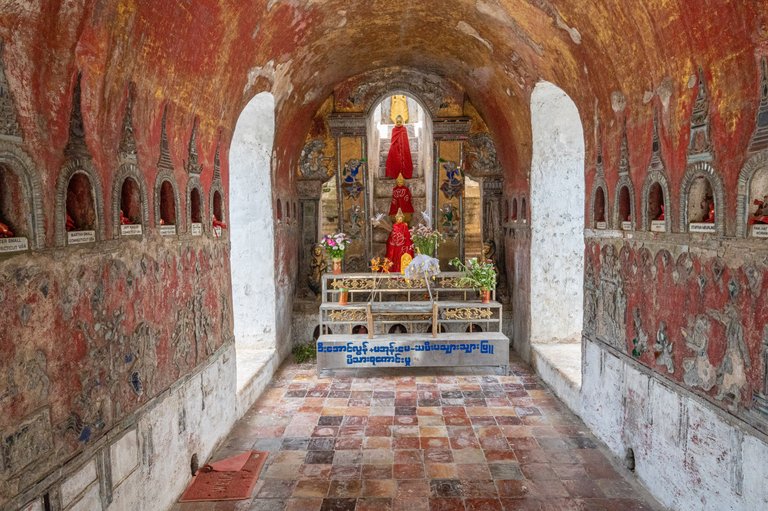
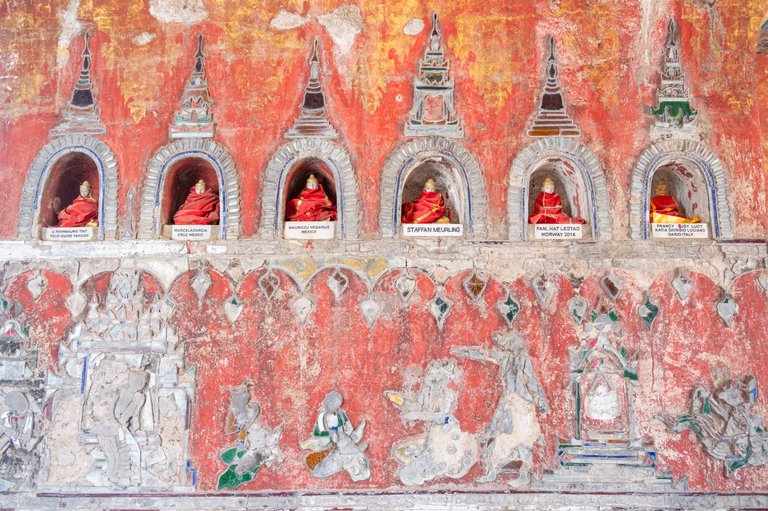
Most figures are left in outline forms only with some glass inlays. There are four halls in four sides of the pagoda and they are connected with the passage ways. There are more Buddha images in small niches and glass inlay figures on the walls of the passage ways.
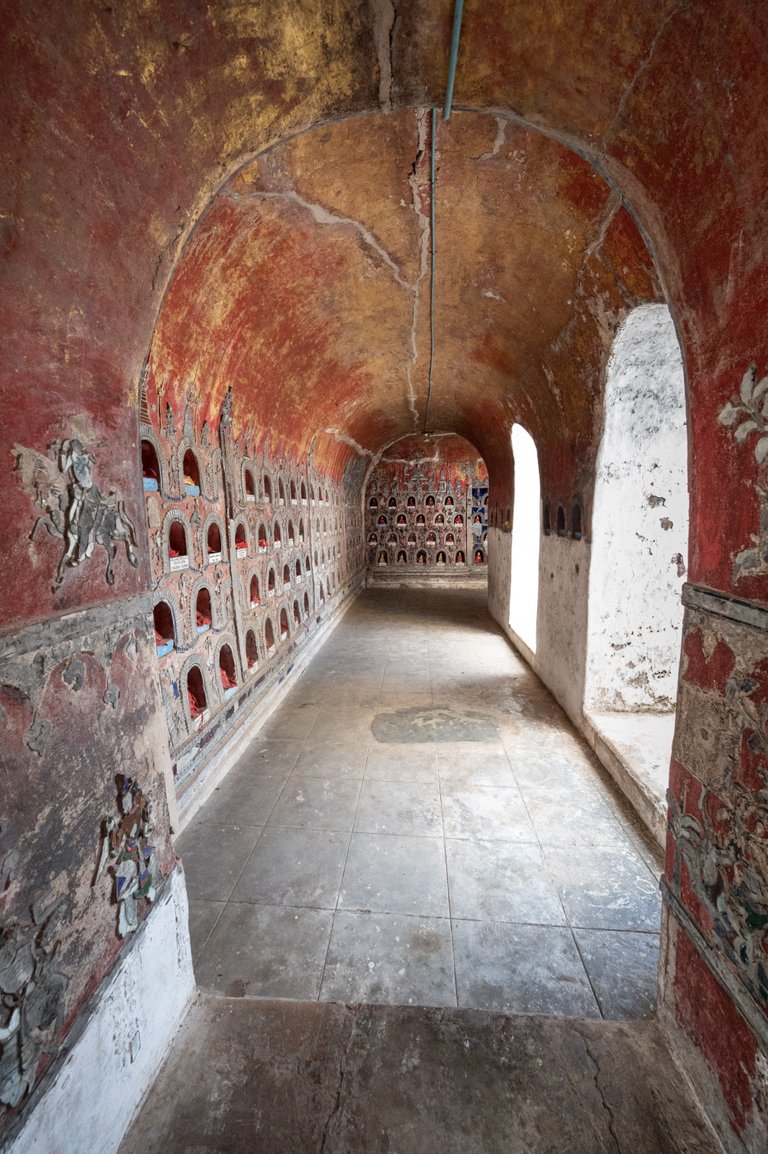
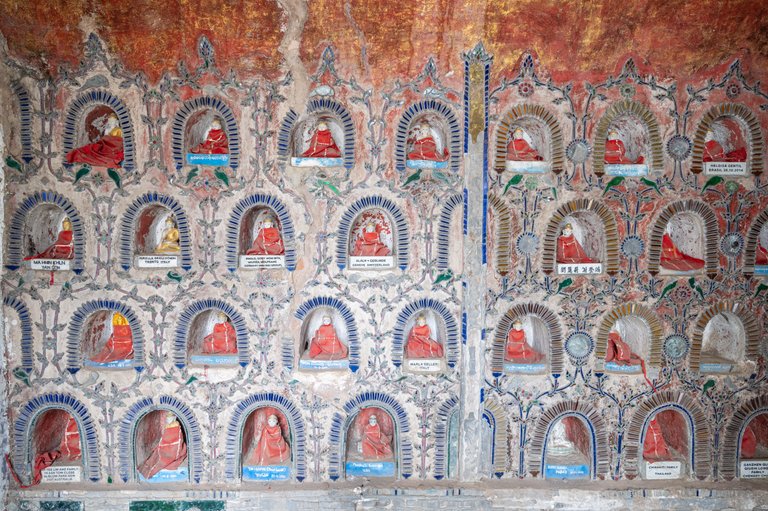
What the glass inlay figures descript about the lives and art of that time
The pagoda was built in 1888 so its architecture and interior design was influenced by those of Konebaung dynasty (from 1752 to 1885). The last king of Konebaung dynasty, King Thi Baw, was sent into exile to India after the third Anglo-Burmese war in 1885; that ended the millennium-old Burmese monarchy. Nyaungshwe (Yaunghwe) was ruled by a Sawbwa1 (Shan/Tai princely ruler) under the administration of Burmese king.
At the time of Burma being annexed to the British Indian Empire, Nyaungshwe Sawbwa, Saw Maung, intended to make his son king in place of King Thibaw. However, one of his cousins, Sao Chit Su, who wanted Linbin in place of Thibaw, attacked him. He was wounded and left Sao On to defeat Sao Chit Su. Sao On defeated the enemy and made himself the Sawbwa of Nyaungshwe in 13th January 1886 and refused to return Sawbwaship to Saw Maung and appealed to the British for protection. This Shwe Yan Pyay pagoda was built at the place where he met the British troops coming to the Shan state and the pagoda was also called 'fortified pagoda' at that time. So, one see British cavalry and foot soldier figures on one of the passageway walls as follow.
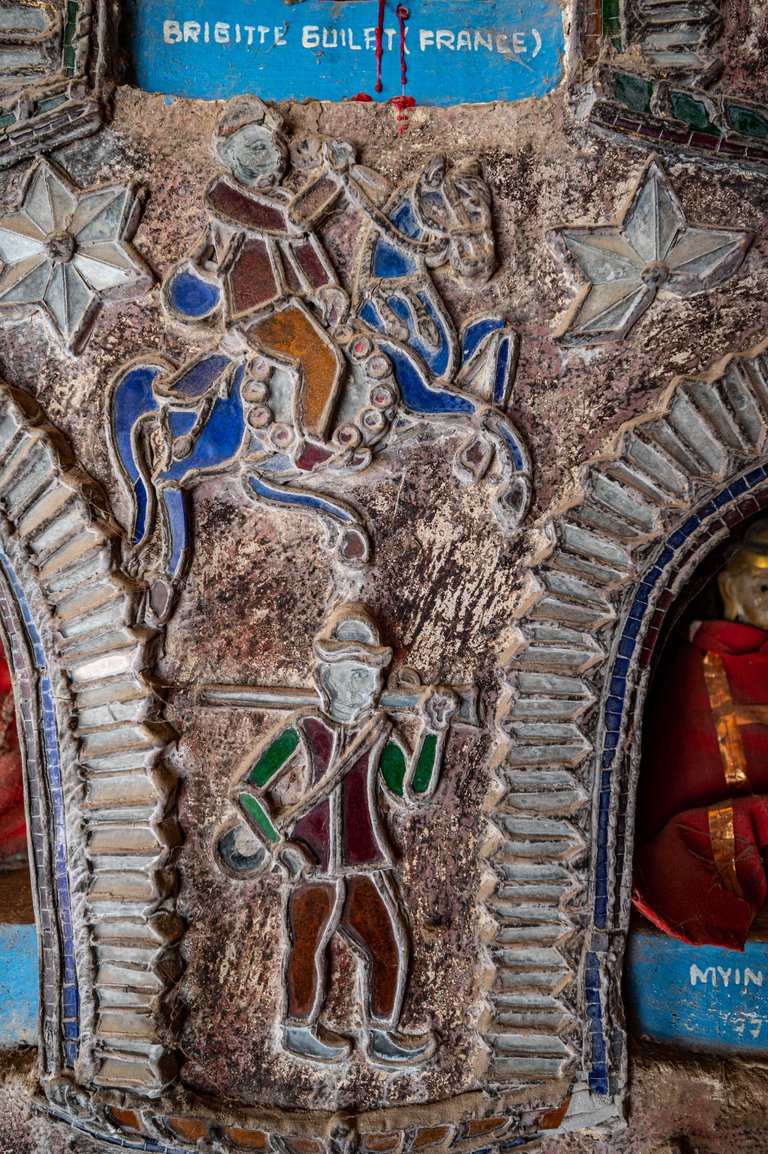

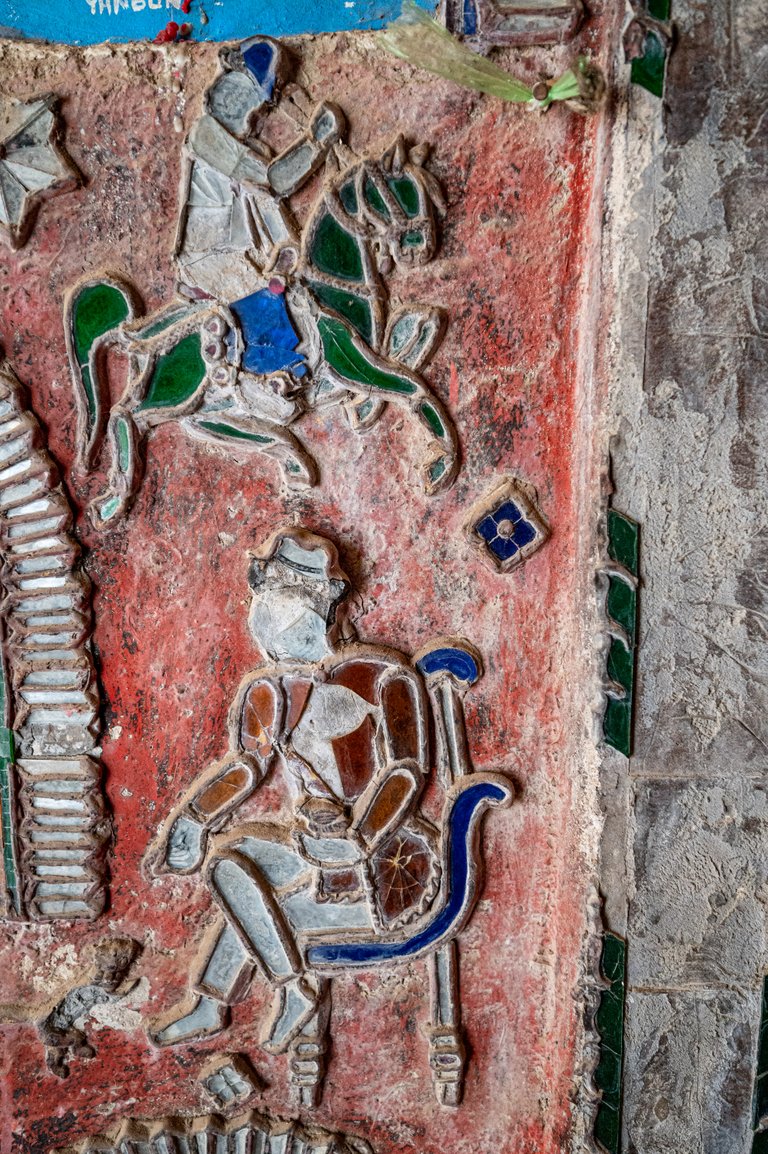
There are also figures of Tai/Shan soldiers with huge hats. Those huge hats made of straw are not commonly seen nowadays except at our Tai traditional festivals worn as to preserve the tradition. The following are the figure of Tai soldiers with guns and swords.
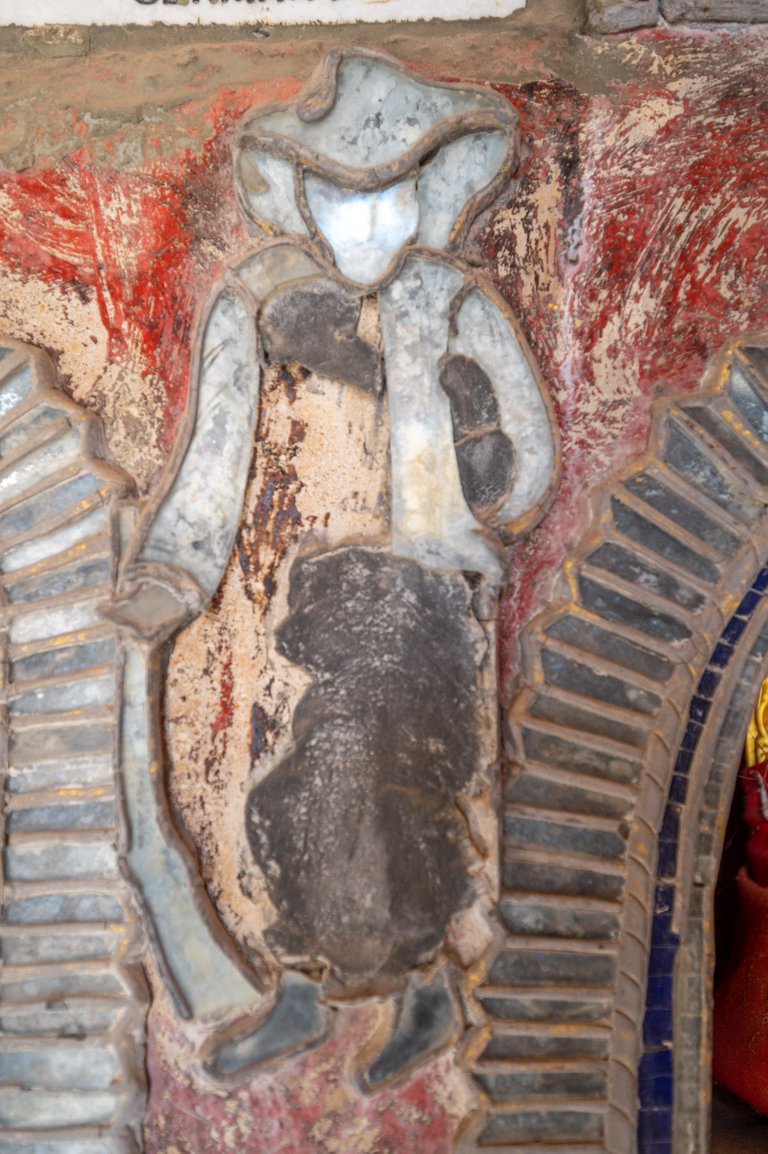
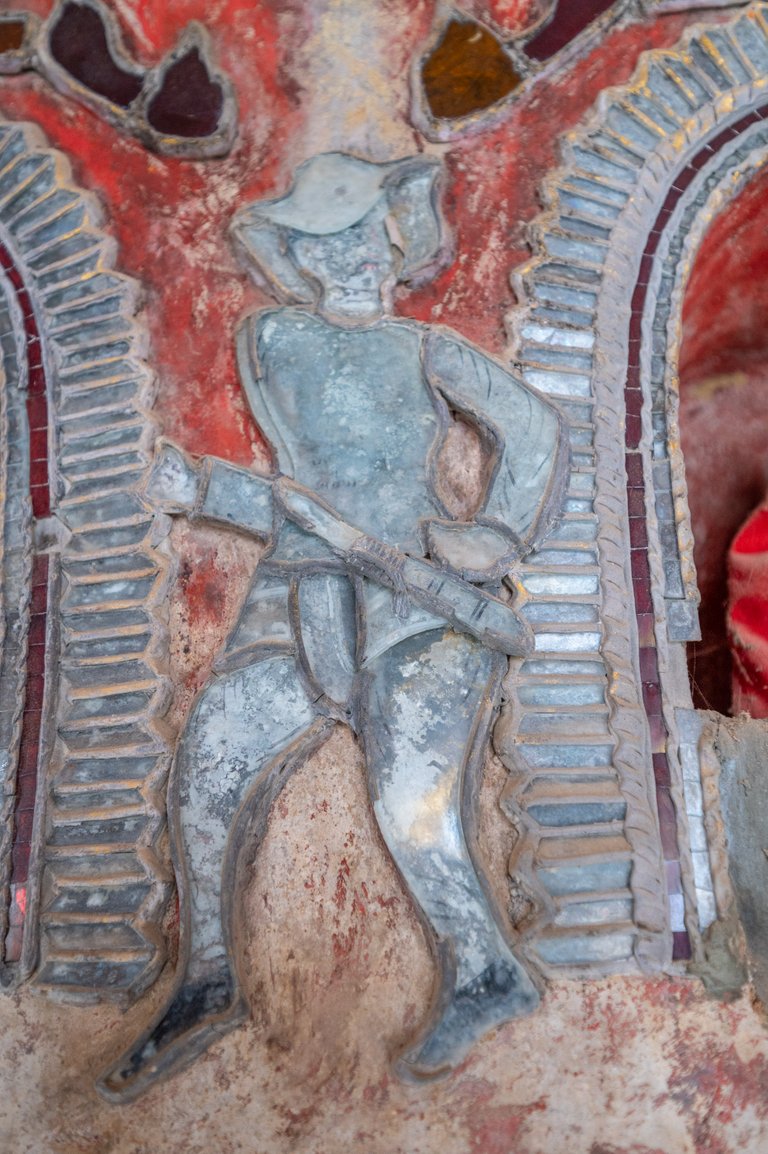
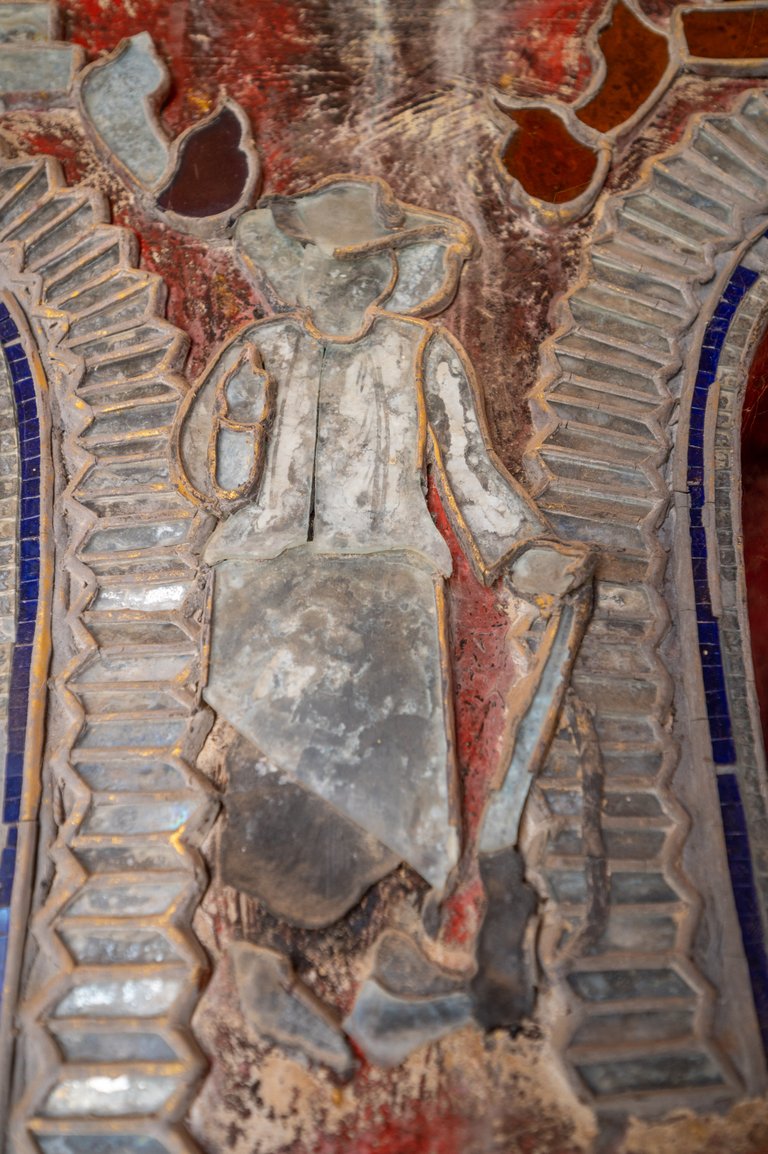
The scene of Nyaungshwe Sawbwa receiving the commander from the British army was portrayed in the painting sketch from the following link. I didn't include the image for the sake of its copyright.
https://fineartamerica.com/featured/burma-nyaung-shwe-1887-granger.html
There are many more interesting glass inlay figures on the walls of the passage ways. Other figures I found are those of artistes of that era. It can be recognized that the people from those days had some tattoo on their legs and that was depicted in those figures. The last two figures are of musicians with a traditional drum and a clarinet.
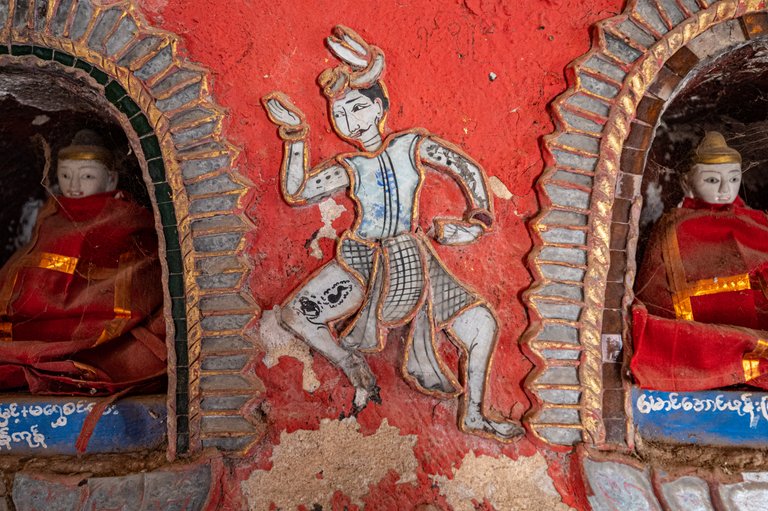
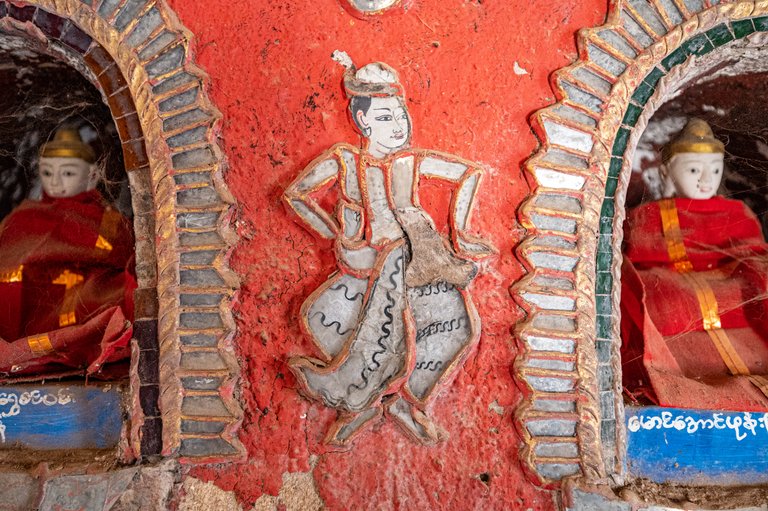
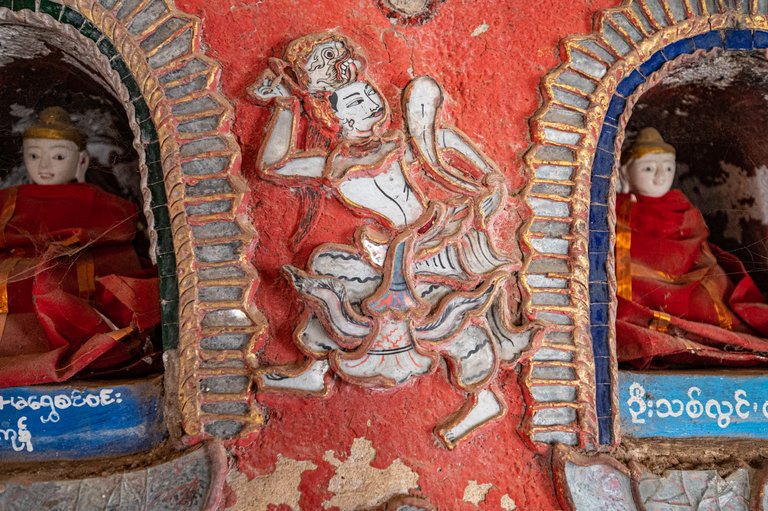
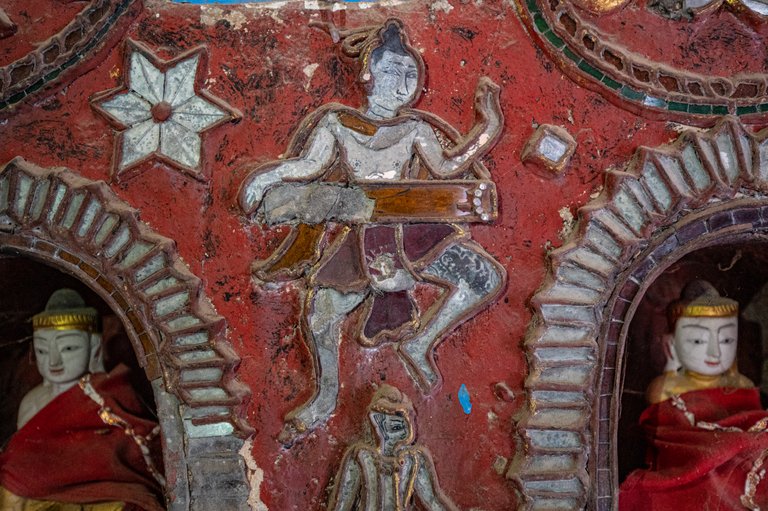

There are figures of kinnari, kinnara (male and female mythical birds with human torso), giants, hermits and many more figures on the wall. However, unfortunately, most figures are disfigured and need conservation and restoration.
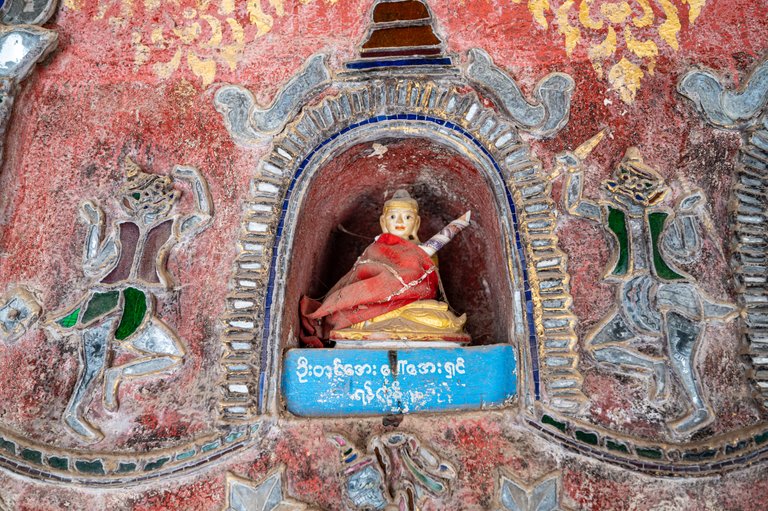
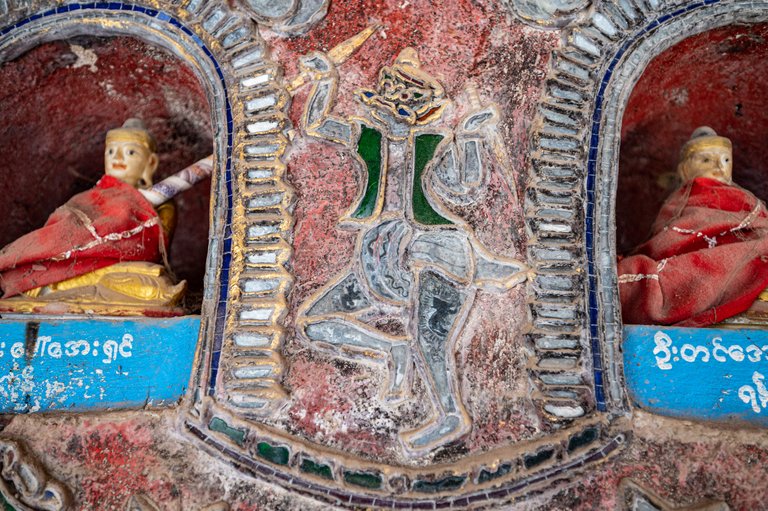

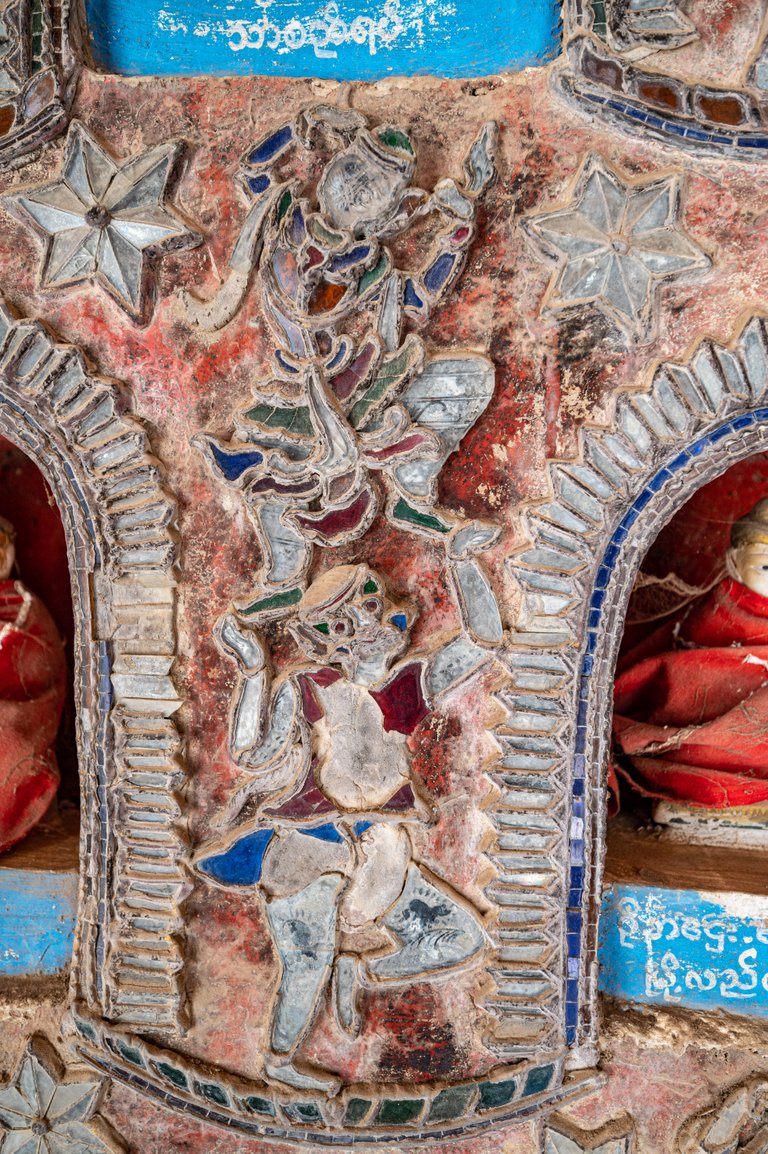
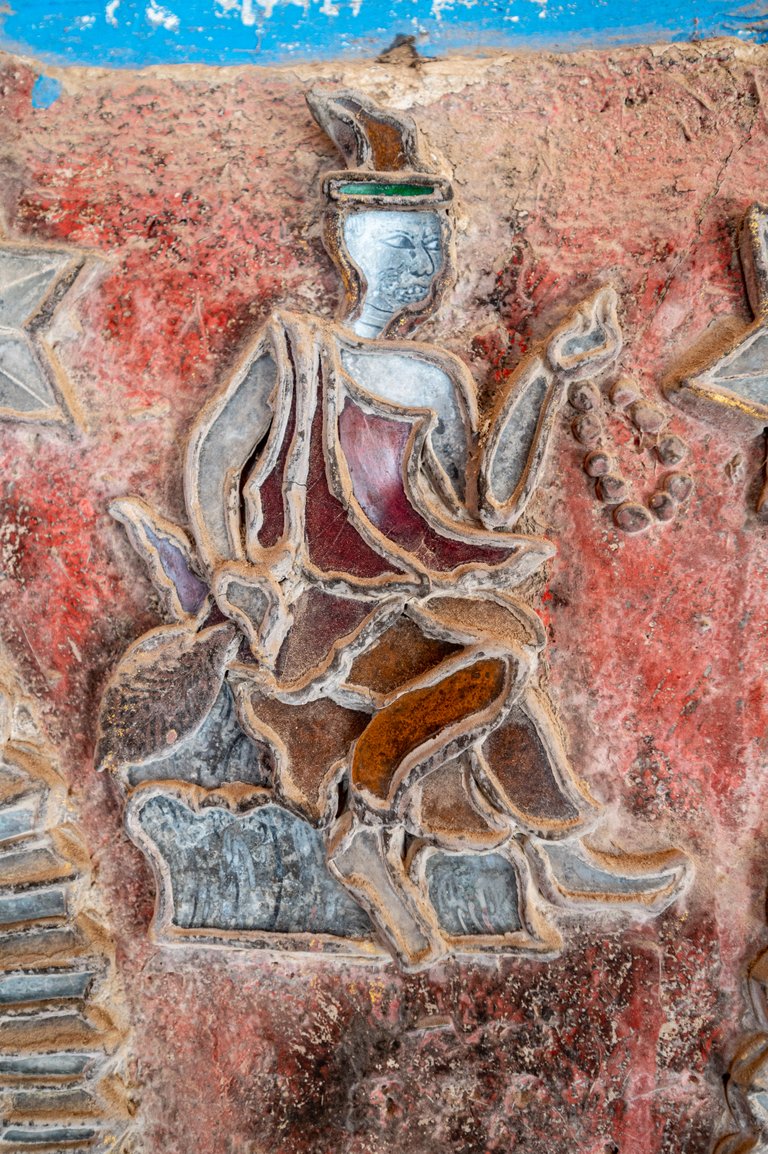
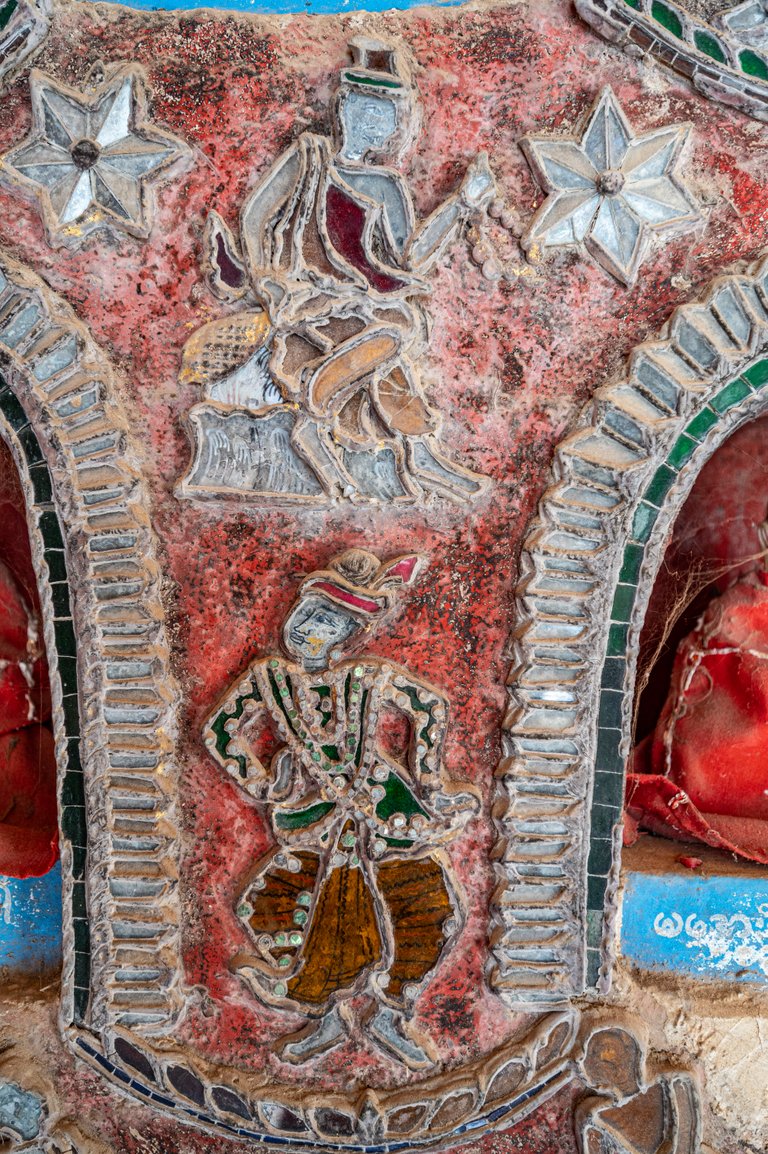
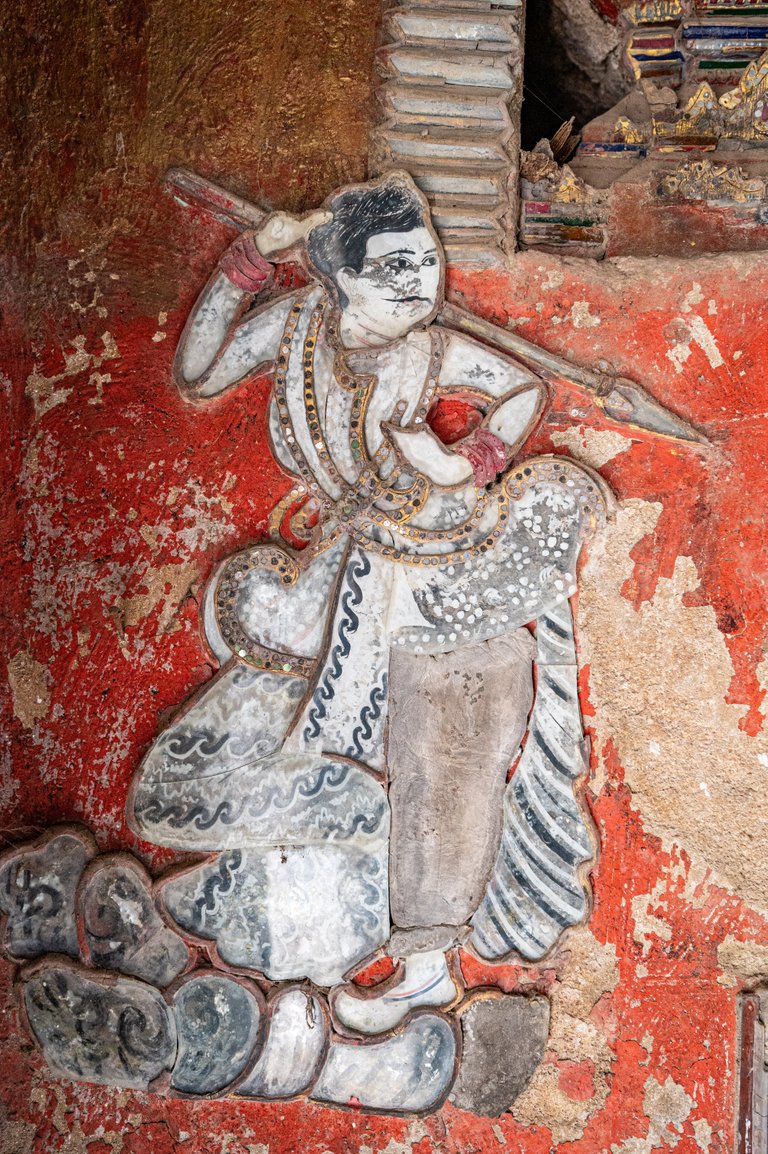
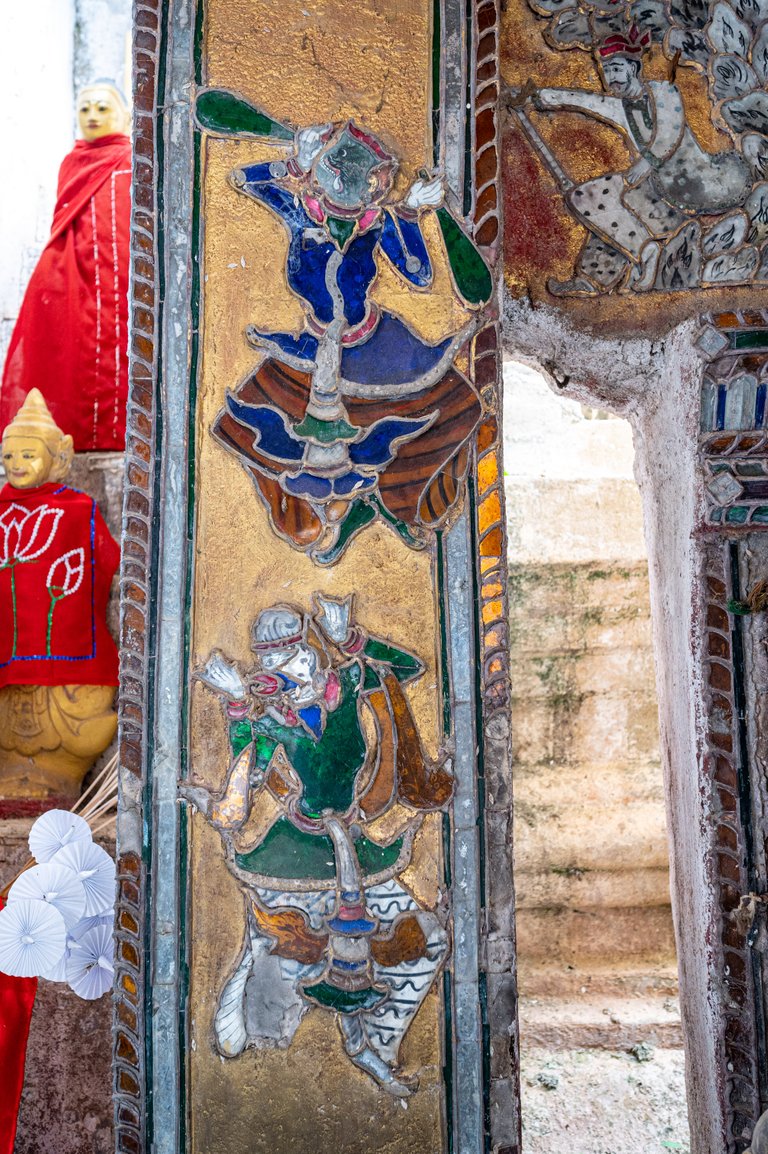
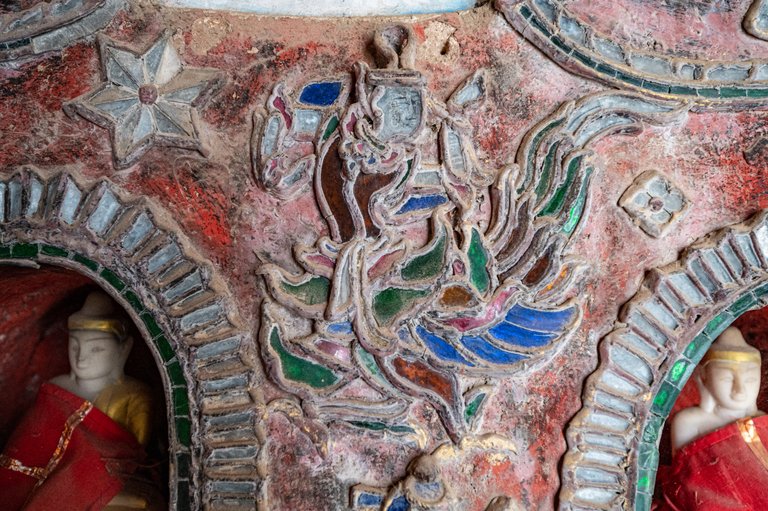
There are some other broad scene like the pilgrimage to the Kyaiktiyo pagoda (the pagoda on the golden rock) located in Mon state as below.
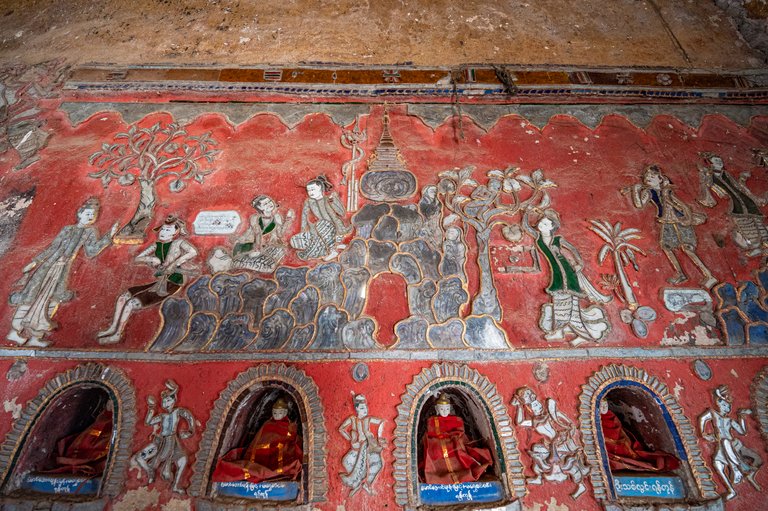
More figures with trees and birds can be seen also. In the first photo, you can see the name of the donor under the Buddha image. The original Buddha images were stolen and so they were restored with new ones with the donation received from the tourists.

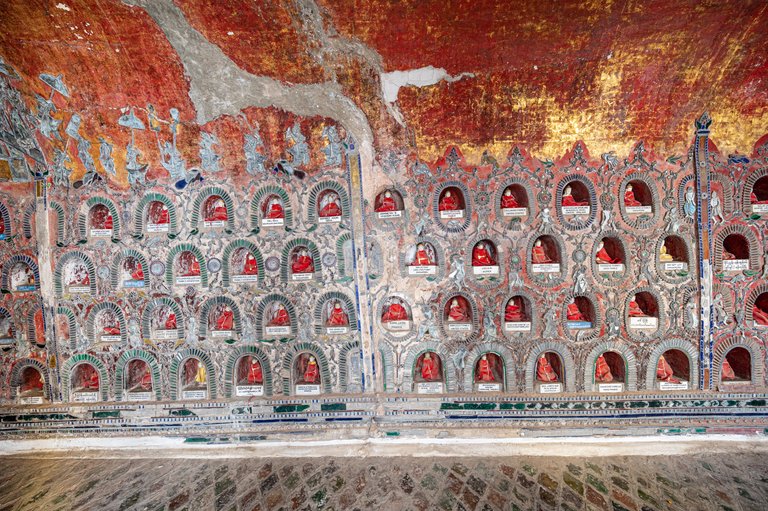
The following is the photos of the Shwe Yan Pyay pagoda surrounded by the four halls at its base and the connecting passage ways. The pagoda is 58 feet high raised on the bed of 12 feet square. The Shwe Yan Pyay pagoda and the monastery are one of the famous tourism sites near Nyaung Shwe and Inlay lake, which is the second biggest fresh inland lake in Myanmar.
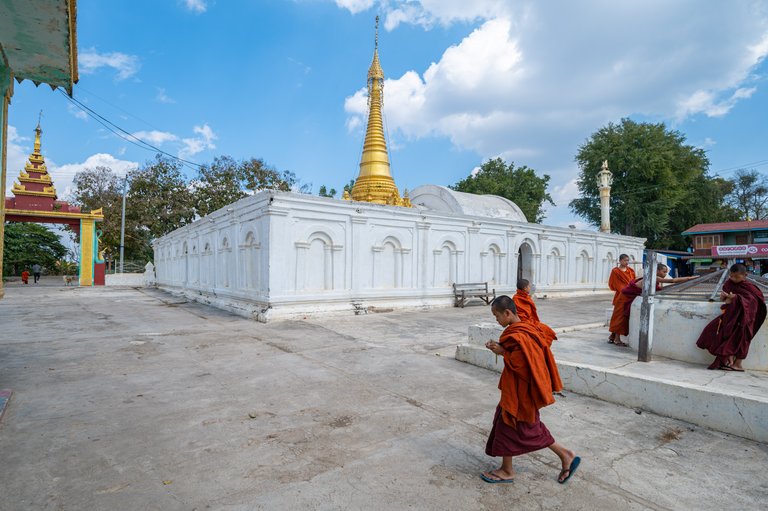
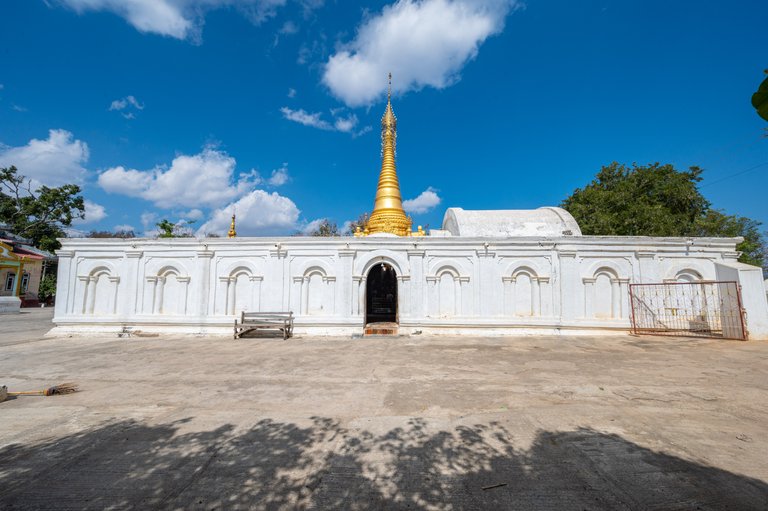
The pagoda inscription of the pagoda can be seen at a place inside the passage way. Pagoda inscriptions usually include the list of materials donated and the good deeds done by the pagoda donor. They can be helpful as historical records for the new generation.
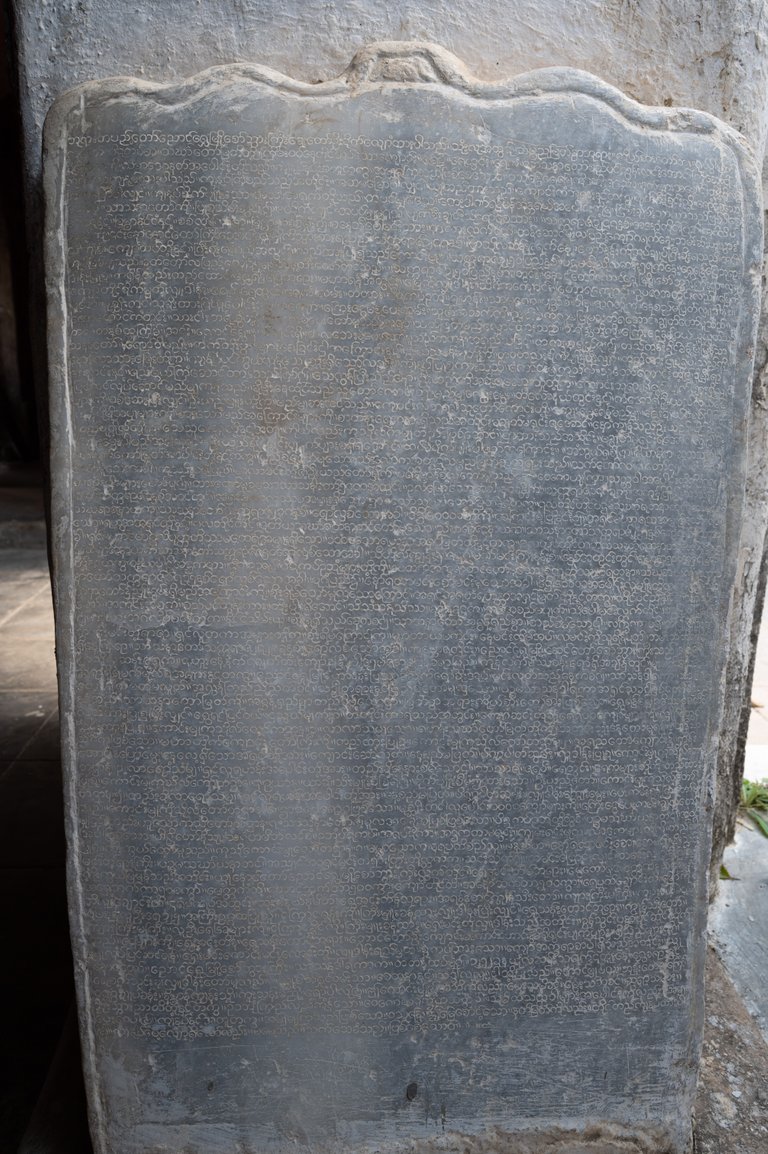
Shwe Yan Pyay Monastery
Shwe Yan Pyay monastery, located in the compound next to the pagoda, was built one year later in 1889. It was also build by Nyaungshwe Sawbwa, Sao On. Most exterior wood carvings of the monastery were replaced with replicas in 1990s because they were weathered and badly dilapidated at that time. The interior decoration were made mostly with glass inlays and various exquisite wooden waves and curves. Beautiful glass inlay ceiling with grand pillars inside the monastery can be seen in the photos below and also the glass inlay figures on the throne of the Buddha image. The monastery has beautiful oval shape windows, which attract local visitors for taking photographs.
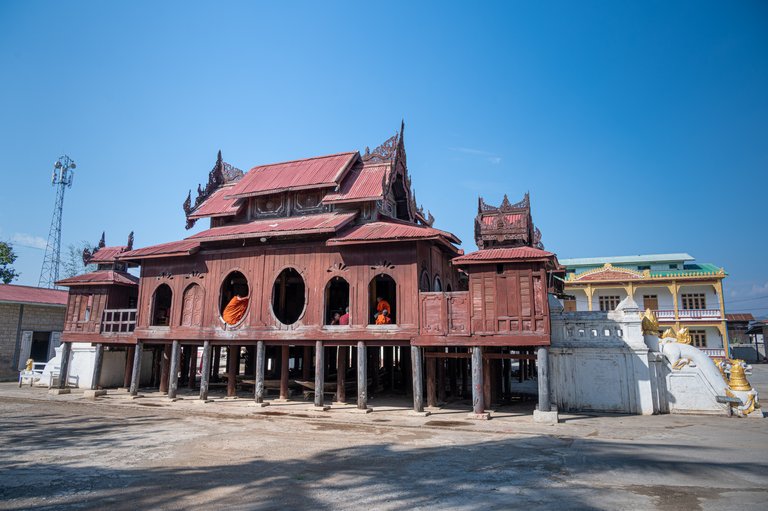

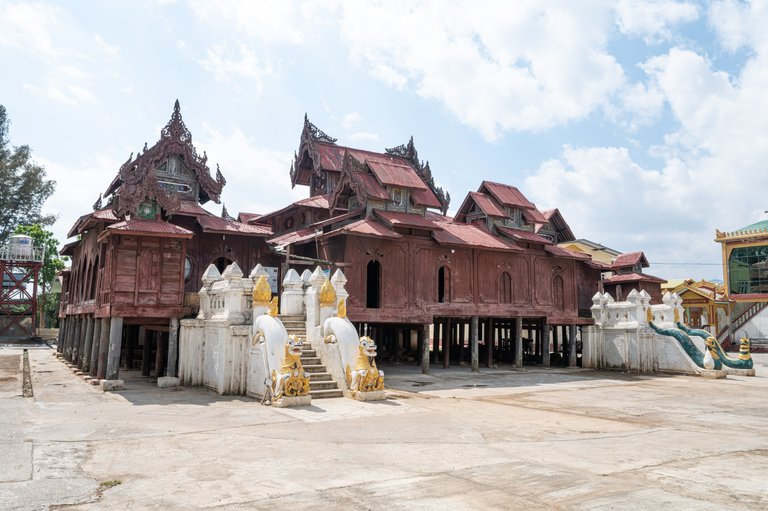
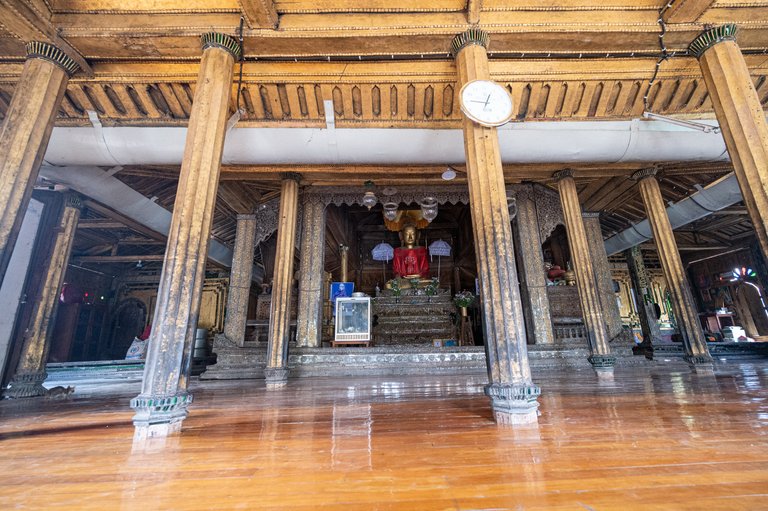
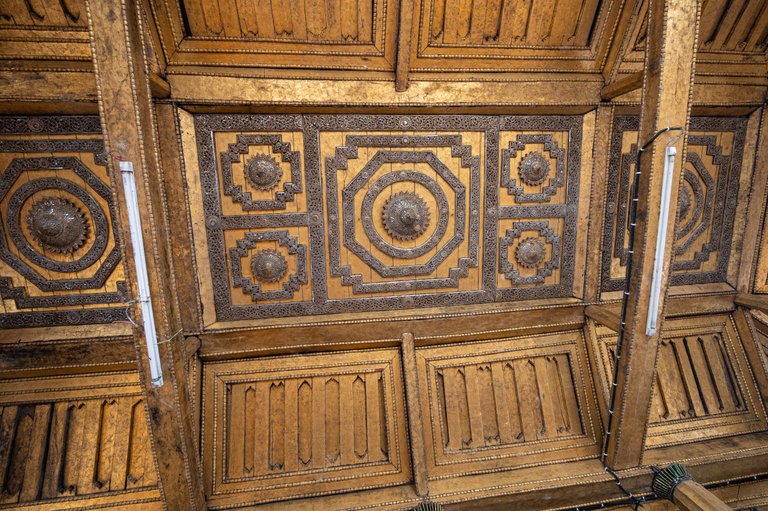
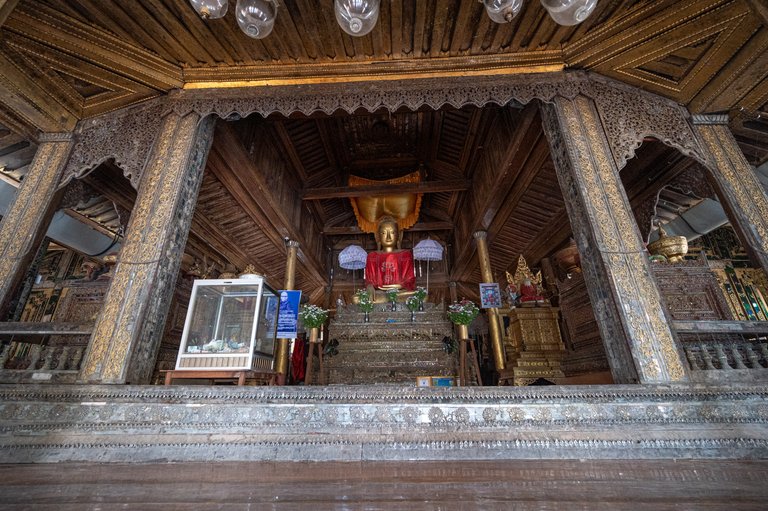
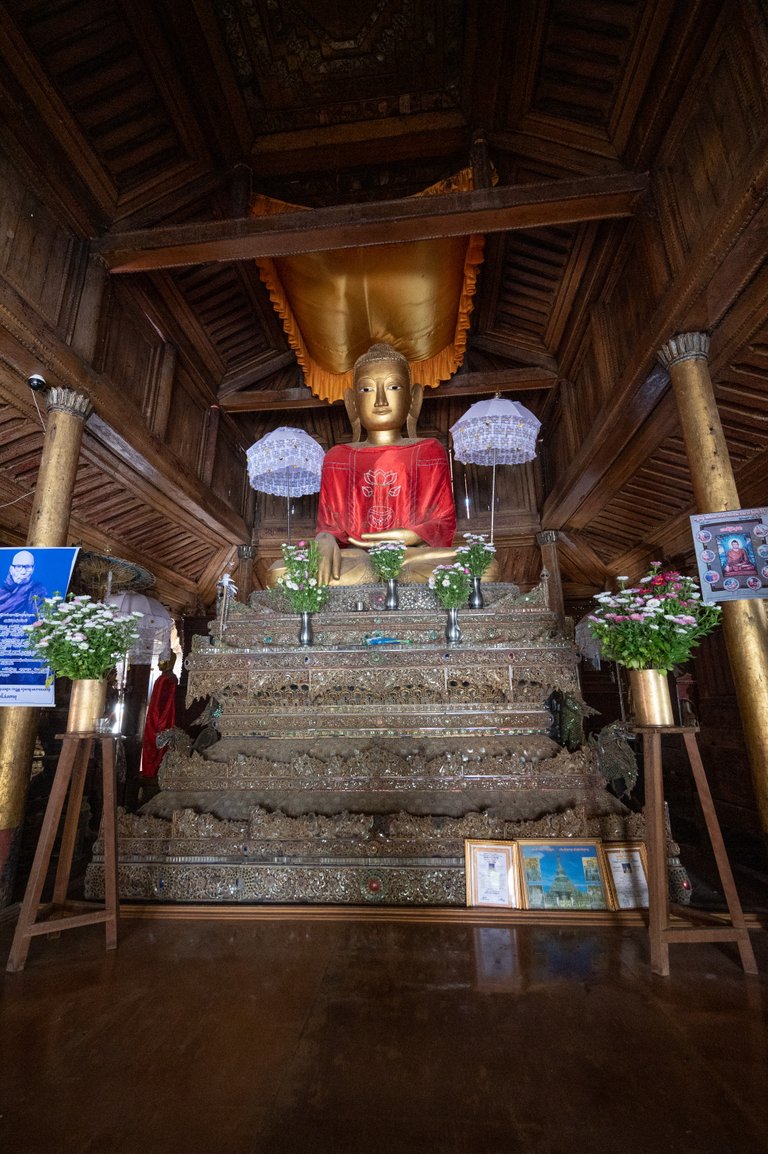

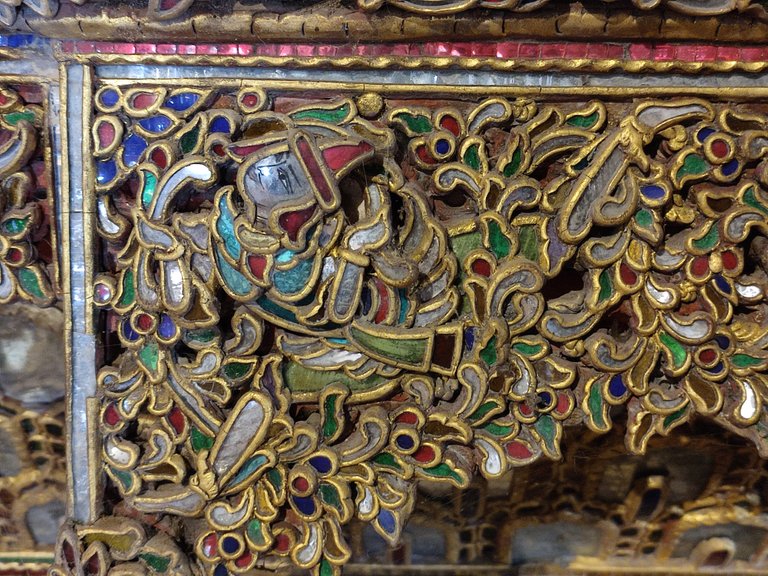
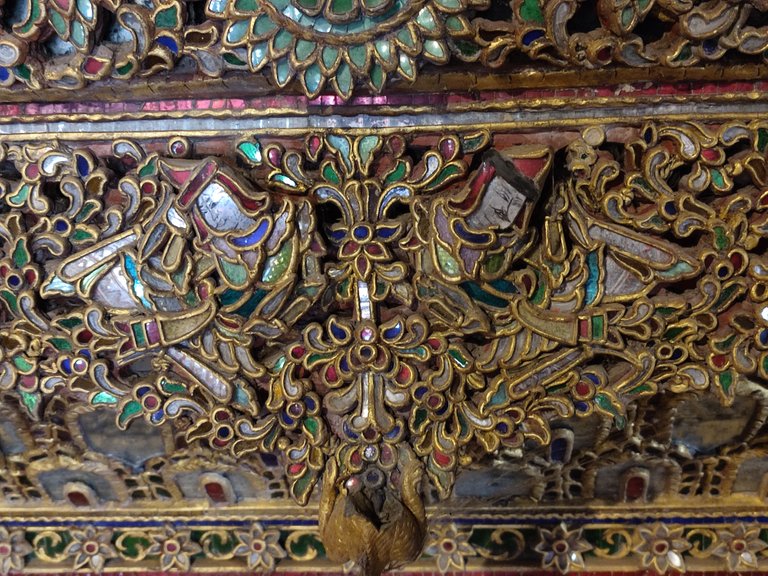
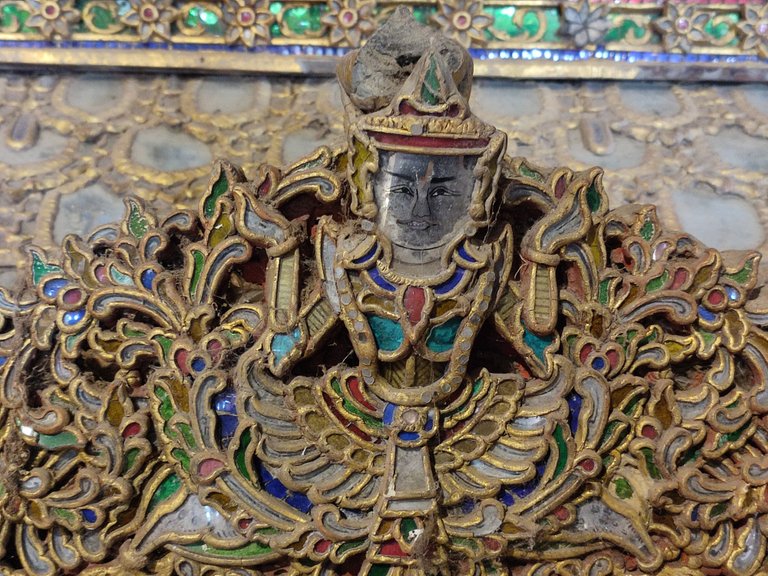
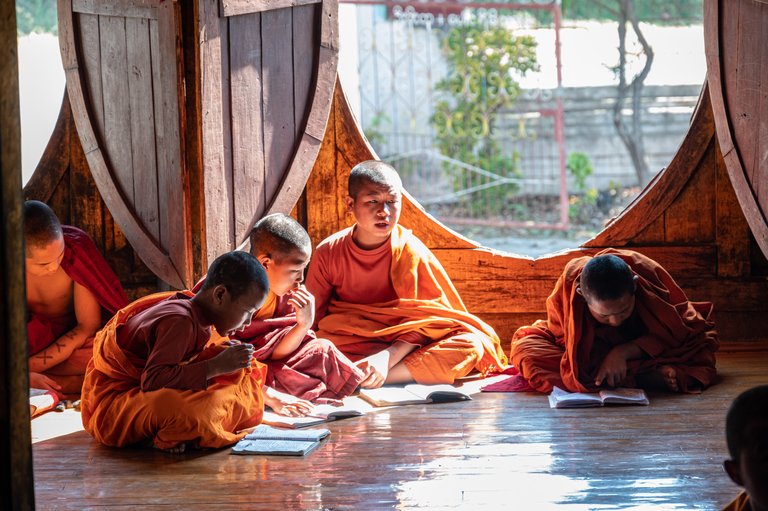
Nyaungshwe was located in southern Shan state, Myanmar and the pagoda and monastery are on the way to Nyaungshwe about 4 km away. Nyaungshwe was a town ruled by Sawbwas1 (Tai/Shan princely ruler) and the last Sawbwa is Sao Shwe Thaike (1927-1959). It is also the entrance to the Inlay lake, where famous leg rowers live and floating plantations and other tourism sites such as Shwe Indein pagoda, small traditional industries such as cheroot making, lotus and silk weaving , silversmith, blacksmith, etc. are located. Thank you for reading; let me stop my post here.
Appendix
- Sawbwa is a Burmese term. And Saopha is the Tai Shan Launguage used instead; that means 'lord of the sky'.
Reference
- "Restoration of Shwe Yan Pyay Pagoda (1888) and Monastery (1889)" by Dr Than Tun
- "Great Lords of the Sky: Burma's Shan Aristocracy" by Sao Sanda Simms
@princekham
21st Jan 2022
Congratulations, your post has been added to Pinmapple! 🎉🥳🍍
Did you know you have your own profile map?
And every post has their own map too!
Want to have your post on the map too?
Can see a lot of history and ancient art in your post.I also get knowledge. Thanks for your sharing!
!LUV
I included the history to make the post alive. Thank you. !LUV
Hiya, @LivingUKTaiwan here, just swinging by to let you know that this post made it into our Honorable Mentions in Daily Travel Digest #1473.
Your post has been manually curated by the @pinmapple team. If you like what we're doing, please drop by to check out all the rest of today's great posts and consider supporting other authors like yourself and us so we can keep the project going!
Become part of our travel community:
That’s so amazing! Thank you so much for your share with us.
Thank you! Most of the figures are not beautiful but I like the fact that they were reflecting our history 100 years ago. !LUV
⋆ ᴛʜᴇ ᴘʟᴀᴄᴇ ғᴏʀ sᴏᴜᴛʜᴇᴀsᴛ ᴀsɪᴀɴ ᴄᴏɴᴛᴇɴᴛ ᴏɴ ʜɪᴠᴇ
⋆ sᴜʙsᴄʀɪʙᴇ ᴛᴏ ᴛʜᴇ ᴀsᴇᴀɴ ʜɪᴠᴇ ᴄᴏᴍᴍᴜɴɪᴛʏ
⋆ ғᴏʟʟᴏᴡ ᴛʜᴇ ᴀsᴇᴀɴ ʜɪᴠᴇ ᴄᴏᴍᴍᴜɴɪᴛʏ ᴠᴏᴛɪɴɢ ᴛʀᴀɪʟ
⋆ ᴅᴇʟᴇɢᴀᴛɪᴏɴ ʟɪɴᴋs 25 ʜᴘ⇾50 ʜᴘ⇾100 ʜᴘ⇾500 ʜᴘ⇾1,000 ʜᴘ
It is my pleasure. Thank you!
I love this kind of post. Thanks for sharing this amazing place with us. I hope one day soon I can visit Myanmar.
Thank you! Yes, please visit us one day when situations are back to normal. Nyaungshwe has other places to visit like Nyaungshwe Haw (Haw Yawnghwe), Inlay Lake, and many other ancient pagodas like those in Samkar.
Yay! 🤗
Your content has been boosted with Ecency Points, by @princekham.
Use Ecency daily to boost your growth on platform!
Support Ecency
Vote for new Proposal
Delegate HP and earn more